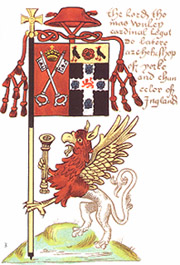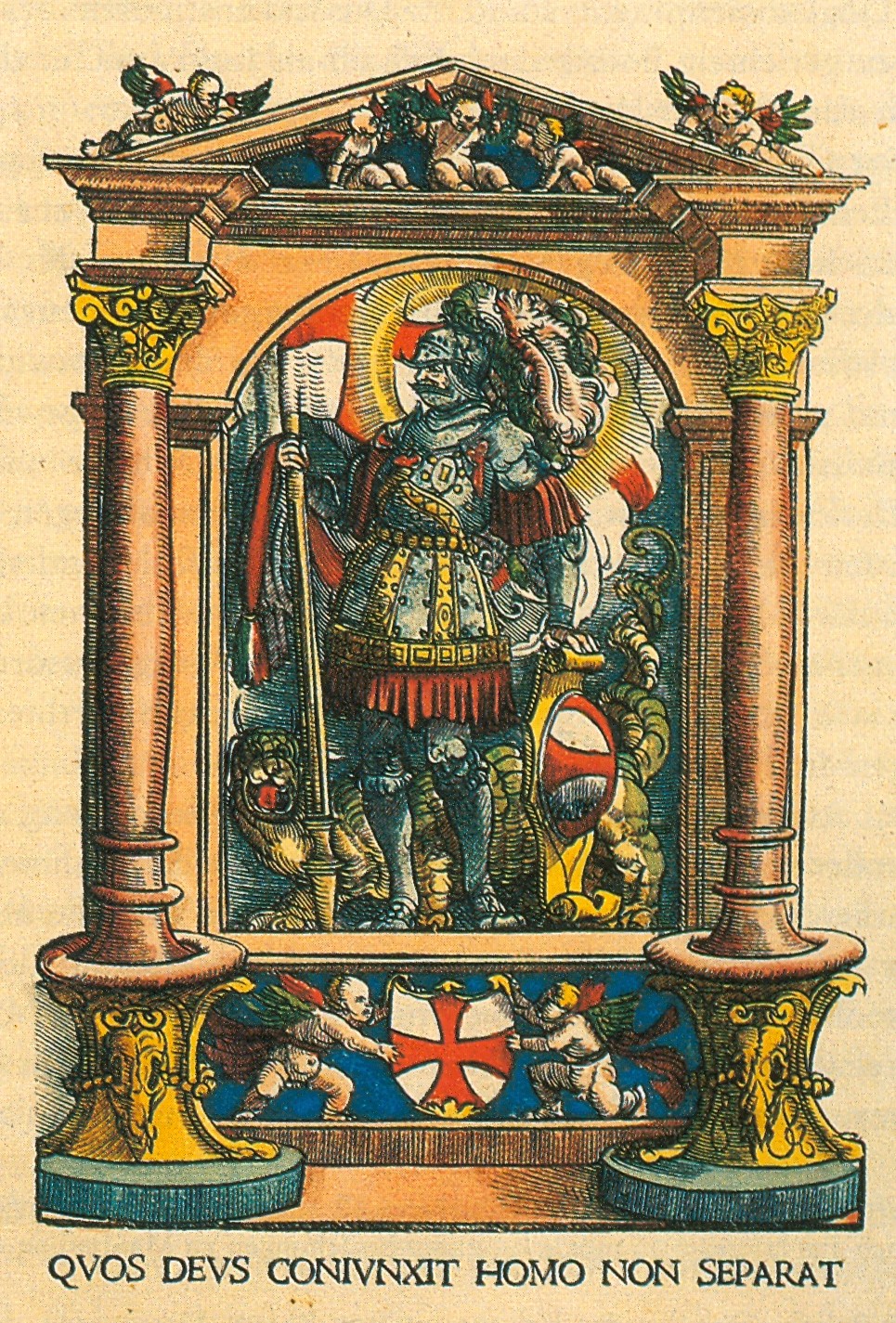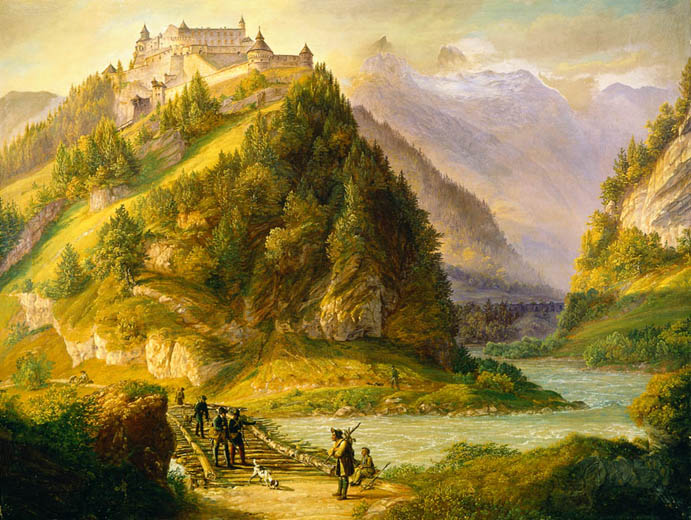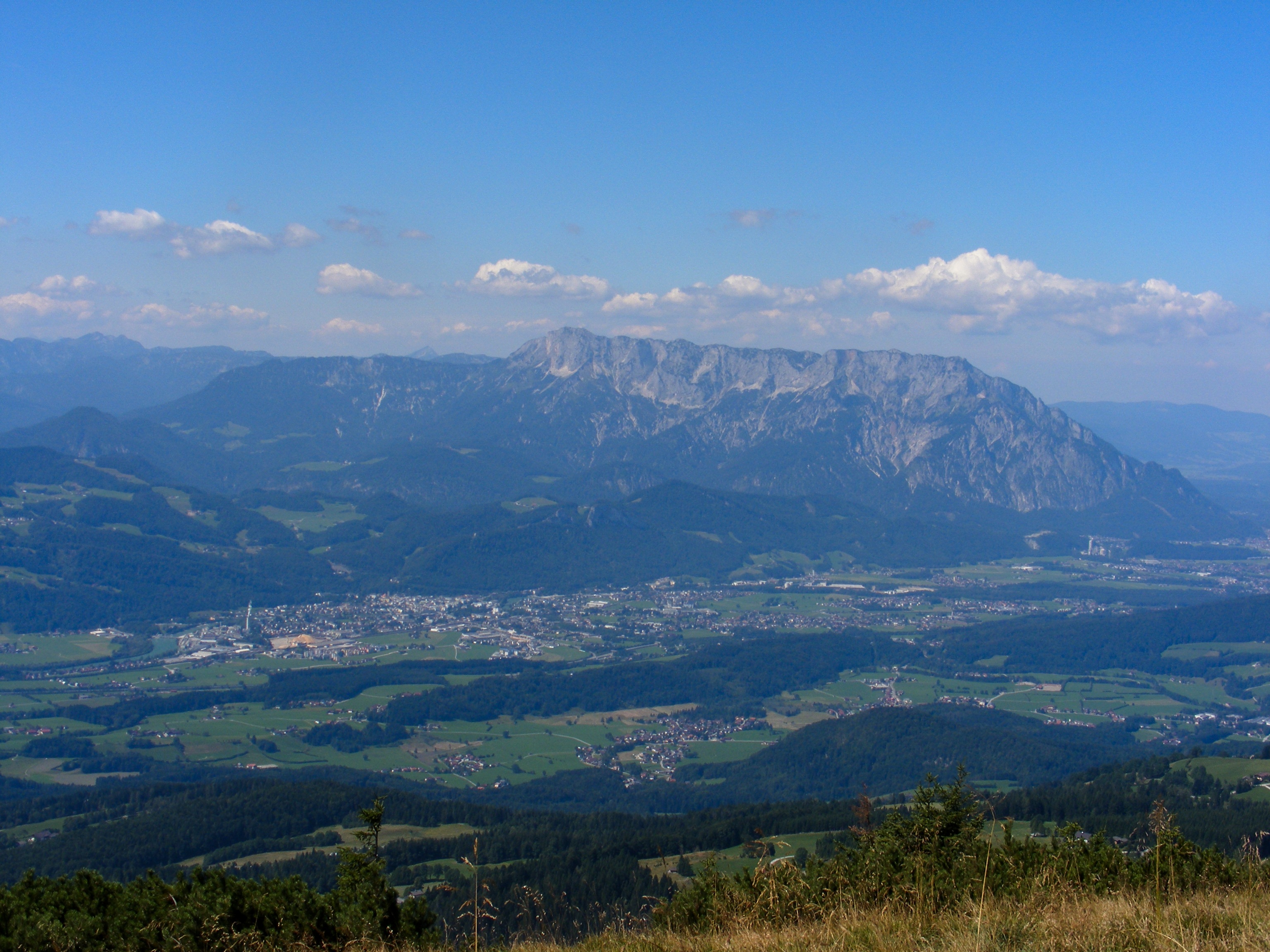|
Matthäus Lang Von Wellenburg
Matthäus Lang von Wellenburg (1469 – 30 March 1540) was a statesman of the Holy Roman Empire, a Cardinal and Prince-Archbishop of Salzburg from 1519 to his death. Life Matthäus Lang was the son of a burgher of Augsburg and later received the noble title of ''Wellenburg'' after a castle near his hometown that came into his possession in 1507. After studying at Ingolstadt, Vienna and Tübingen he entered the service of Emperor Frederick III of Habsburg and quickly made his way to the front. He was also one of the most trusted advisers of Frederick's son and successor Maximilian I, and his services were rewarded in 1500 with the provostship of the cathedral at Augsburg and five years later with the position of the Bishop of Gurk. He also received the Bishopric of Cartagena in Murcia in 1510 and was appointed cardinal by Pope Julius II one year later. In 1514 he became coadjutor to Leonhard von Keutschach, the Salzburg Prince-Archbishop, whom he succeeded in 1519. He receiv ... [...More Info...] [...Related Items...] OR: [Wikipedia] [Google] [Baidu] |
Leonhard Von Keutschach
Leonhard von Keutschach (c. 1442 – 8 June 1519) was Prince-Archbishop of Salzburg from 1495 until his death, the last to rule in the feudal style. Biography He was probably born at Viktring in Carinthia, the son of Otto von Keutschach, a judge at the manorial court (''Hofrichter''), and Gertrud von Möderndorf. The Keutschach family came from the northern shore of Lake Keutschach. Their arms are a white turnip on a black field. Leonhard started out as canon of the Augustinian order and provost of Eberndorf Abbey. In 1490 he was promoted as provost of the Salzburg chapter and in 1495 was elected prince-archbishop. In 1498 he again expelled the Salzburg Jews, who had returned to the area since their banishment in 1404, and had their synagogues at Salzburg and Hallein destroyed. The City of Salzburg was politically unstable, after in 1481 Emperor Frederick III of Habsburg had granted its citizens the privilege to elect its own council and mayor, which was the cause ... [...More Info...] [...Related Items...] OR: [Wikipedia] [Google] [Baidu] |
Maximilianus Transylvanus
Maximilian van Sevenbergen, Latinized in Maximilianus Transylvanus (Transilvanus, Transylvanianus), also Maximilianus of Transylvania and Maximilian (Maximiliaen) von Sevenborgen (between 1485 and 1490 – 1538, Brussels), was a courtier of Emperor Charles V who is mainly known for having authored the earliest account published on the Magellan and Elcano expedition, the first circumnavigation of the world (1519–22). Written after he interviewed the survivors of the ''Victoria'', and being a relative of its sponsor Christopher de Haro, his account ''De Moluccis Insulis'' is a main source of information about the expedition along with those of Antonio Pigafetta and Peter Martyr. His family I) Steven (Stephanus) van Sevenbergen (His family may have come from the village of Zevenbergen in North Brabant, which was also the native town of Erasmus's mother), married Joanna Meers. II) Lucas van Sevenbergen, bourgeois of Brussels, goldsmith, living in Brussels, valet de ... [...More Info...] [...Related Items...] OR: [Wikipedia] [Google] [Baidu] |
Cardinal Wolsey
Thomas Wolsey ( – 29 November 1530) was an English statesman and Catholic bishop. When Henry VIII became King of England in 1509, Wolsey became the king's almoner. Wolsey's affairs prospered and by 1514 he had become the controlling figure in virtually all matters of state. He also held important ecclesiastical appointments. These included the Archbishopric of York—the second most important role in the English church—and that of papal legate. His appointment as a cardinal by Pope Leo X in 1515 gave him precedence over all other English clergy. The highest political position Wolsey attained was Lord Chancellor, the king's chief adviser (formally, as his successor and disciple Thomas Cromwell was not). In that position, he enjoyed great freedom and was often depicted as an ''alter rex'' ("other king"). After failing to negotiate an annulment of Henry's marriage to Catherine of Aragon, Wolsey fell out of favour and was stripped of his government titles. He retreated ... [...More Info...] [...Related Items...] OR: [Wikipedia] [Google] [Baidu] |
Charles V, Holy Roman Emperor
Charles V, french: Charles Quint, it, Carlo V, nl, Karel V, ca, Carles V, la, Carolus V (24 February 1500 – 21 September 1558) was Holy Roman Emperor and Archduke of Austria from 1519 to 1556, King of Spain ( Castile and Aragon) from 1516 to 1556, and Lord of the Netherlands as titular Duke of Burgundy from 1506 to 1555. He was heir to and then head of the rising House of Habsburg during the first half of the 16th century, his dominions in Europe included the Holy Roman Empire, extending from Germany to northern Italy with direct rule over the Austrian hereditary lands and the Burgundian Low Countries, and Spain with its southern Italian possessions of Naples, Sicily, and Sardinia. He oversaw both the continuation of the long-lasting Spanish colonization of the Americas and the short-lived German colonization of the Americas. The personal union of the European and American territories of Charles V was the first collection of realms labelled " the empire ... [...More Info...] [...Related Items...] OR: [Wikipedia] [Google] [Baidu] |
Swabian League
The Swabian League (''Schwäbischer Bund'') was a mutual defence and peace keeping association of Imperial Estates – free Imperial cities, prelates, principalities and knights – principally in the territory of the early medieval stem duchy of Swabia established on 14 February 1488. The religious revolution of the Protestant Reformation divided its members, and the Swabian League disbanded in 1534. History The Swabian League was established in 1488 at the behest of Emperor Frederick III of Habsburg and supported as well by Bertold von Henneberg-Römhild, archbishop of Mainz, whose conciliar rather than monarchic view of the ''Reich'' often put him at odds with Frederick's successor Maximilian. The Swabian League cooperated towards the keeping of the imperial peace and at least in the beginning curbing the expansionist Bavarian dukes from the House of Wittelsbach and the revolutionary threat from the south in the form of the Swiss. The League held regular meetings, supported ... [...More Info...] [...Related Items...] OR: [Wikipedia] [Google] [Baidu] |
Hohensalzburg Fortress
Hohensalzburg Fortress (german: Festung Hohensalzburg, lit=High Salzburg Fortress) is a large medieval fortress in the city of Salzburg, Austria. It sits atop the Festungsberg at an altitude of 506 m. It was erected at the behest of the Prince-Archbishops of Salzburg. The fortress is long and wide making it one of the largest medieval castles in Europe. History Early history Construction of the fortress began in 1077 under Archbishop Gebhard von Helfenstein. The original design was a basic bailey with a wooden wall. In the Holy Roman Empire, the archbishops of Salzburg were already powerful political figures and they expanded the fortress to protect their interests. Helfenstein's conflict with Emperor Henry IV during the Investiture Controversy influenced the expansion of the fortress, with the Archbishop taking the side of Pope Gregory VII and the German anti-king Rudolf of Rheinfelden. The fortress was gradually expanded during the following centuries. The ring walls an ... [...More Info...] [...Related Items...] OR: [Wikipedia] [Google] [Baidu] |
Burg Hohenwerfen
Hohenwerfen Castle (german: Festung Hohenwerfen, lit=Hohenwerfen Fortress) is a medieval rock castle, situated on a precipice overlooking the Austrian market town of Werfen in the Salzach valley, approximately south of Salzburg. The fortress is surrounded by the Berchtesgaden Alps and the adjacent Tennen Mountains. Hohenwerfen is a "sister" of Hohensalzburg Fortress, both built by the Archbishops of Salzburg in the 11th century. The castle became known internationally as the main location in the film ''Where Eagles Dare''. History The fortification was built between 1075 and 1078 at the behest of Archbishop Gebhard of Salzburg during the Imperial Investiture Controversy, meant as a strategic bulwark atop a high rock. Gebhard, an ally of Pope Gregory VII and the anti-king Rudolf of Rheinfelden, had three major castles extended to secure the route across the Eastern Alps along the Salzach river against the forces of King Henry IV of Germany: Hohenwerfen, Hohensalzburg and P ... [...More Info...] [...Related Items...] OR: [Wikipedia] [Google] [Baidu] |
Hallein
Hallein () is a historic town in the Austrian state of Salzburg. It is the capital of Hallein district. Geography The town is located in the ''Tennengau'' region south of the City of Salzburg, stretching along the Salzach river in the shadow of the Untersberg massif, close to the border with Germany in the west. With a population of about 21,150, Hallein is the second largest town of the Salzburg state. The municipal area comprises the cadastral communities of Adnet II, Au, Burgfried, Dürrnberg, Gamp, Gries, Hallein proper, Oberalm II, and Taxach. Hallein can be reached by suburban ''S-Bahn'' railway from the city of Salzburg. It has also access to the '' A 10'' Tauern Autobahn (European route E55) from Salzburg to Villach. History Long known for the Hallein Salt Mine in the ''Dürrnberg'' plateau, settling in the area have been traced 4000 years back. It was a Celtic community from 600 BCE until the Romans took over their Noricum kingdom in 15 BCE. In the mid 8th cent ... [...More Info...] [...Related Items...] OR: [Wikipedia] [Google] [Baidu] |
German Peasants' War
The German Peasants' War, Great Peasants' War or Great Peasants' Revolt (german: Deutscher Bauernkrieg) was a widespread popular revolt in some German-speaking areas in Central Europe from 1524 to 1525. It failed because of intense opposition from the aristocracy, who slaughtered up to 100,000 of the 300,000 poorly armed peasants and farmers. The survivors were fined and achieved few, if any, of their goals. Like the preceding Bundschuh movement and the Hussite Wars, the war consisted of a series of both economic and religious revolts in which peasants and farmers, often supported by Anabaptist clergy, took the lead. The German Peasants' War was Europe's largest and most widespread popular uprising before the French Revolution of 1789. The fighting was at its height in the middle of 1525. The war began with separate insurrections, beginning in the southwestern part of what is now Germany and Alsace, and spread in subsequent insurrections to the central and eastern areas of ... [...More Info...] [...Related Items...] OR: [Wikipedia] [Google] [Baidu] |
Salzburg
Salzburg (, ; literally "Salt-Castle"; bar, Soizbuag, label=Austro-Bavarian) is the fourth-largest city in Austria. In 2020, it had a population of 156,872. The town is on the site of the Roman settlement of ''Iuvavum''. Salzburg was founded as an episcopal see in 696 and became a seat of the archbishop in 798. Its main sources of income were salt extraction, trade, and gold mining. The fortress of Hohensalzburg, one of the largest medieval fortresses in Europe, dates from the 11th century. In the 17th century, Salzburg became a center of the Counter-Reformation, with monasteries and numerous Baroque churches built. Salzburg's historic center (German: ''Altstadt'') is renowned for its Baroque architecture and is one of the best-preserved city centers north of the Alps. The historic center was enlisted as a UNESCO World Heritage Site in 1996. The city has three universities and a large population of students. Tourists also visit Salzburg to tour the historic center and the sc ... [...More Info...] [...Related Items...] OR: [Wikipedia] [Google] [Baidu] |
Protestant Reformation
The Reformation (alternatively named the Protestant Reformation or the European Reformation) was a major movement within Western Christianity in 16th-century Europe that posed a religious and political challenge to the Catholic Church and in particular to papal authority, arising from what were perceived to be Criticism of the Catholic Church, errors, abuses, and discrepancies by the Catholic Church. The Reformation was the start of Protestantism and the split of the Western Church into Protestantism and what is now the Roman Catholic Church. It is also considered to be one of the events that signified the end of the Middle Ages and the beginning of the early modern period in Europe.Davies ''Europe'' pp. 291–293 Prior to Martin Luther, there were many Proto-Protestantism, earlier reform movements. Although the Reformation is usually considered to have started with the publication of the ''Ninety-five Theses'' by Martin Luther in 1517, he was not excommunicated by Pope Leo X ... [...More Info...] [...Related Items...] OR: [Wikipedia] [Google] [Baidu] |







.jpg)